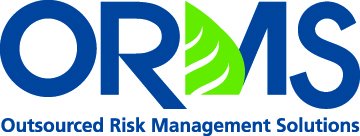PFAS Contamination Can Lead to a Sticky Environmental Situation
Your Phase I Recommends Further Due Diligence. Now What?
June 25, 2019Storage Tanks Present a “HOT” Environmental Risk
September 10, 2019PFAS Contamination Can Lead to a Sticky Environmental Situation
A recent toxic spill at Hartford, Connecticut’s Bradley Airport has generated headlines and brought the dangers of PFAS, a type of chemical found in many popular products, into stark relief. Regulatory guidelines for handling this potentially hazardous group of chemicals are rapidly evolving, and commercial lenders should familiarize themselves with the risks.
What Happened?
On June 8, 2019, a malfunction of a fire suppression system in a Bradley Airport hangar resulted in the release of up to 20,000 gallons of firefighting foam into the sewer system, eventually dumping into the nearby Farmington River.
The foam contained a chemical known as a polyfluoroalkyl substance (PFAS), which in recent years has been linked to a wide range of health issues, including several types of cancer, kidney and liver disease, obesity, and impacts to human reproductive and immune systems.
Known for their remarkable water- and oil-resistant properties, PFAS are commonly found in many consumer products, including non-stick cookware (including TeflonTM), stain-resistant carpeting (such as STAINMASTER®), pizza boxes, and raingear, as well as in industrial products like firefighting foam and car wash solutions.
PFAS have been called “forever chemicals,” both for the length of time they tend to stay in the environment, and their tendency to accumulate in the bodies of fish, animals, and humans.
The Bradley Airport incident was not the first such spill, even in Connecticut. In 2011, a similar fire suppression accident at Waterbury Oxford Airport caused a discharge of PFAS into the nearby Naugatuck River. State officials have recently begun calling for testing to be performed on the local drinking water supply now that the substance’s harmful effects are better known.
How Are PFAS Regulated?
Regulatory oversight of PFAS is evolving rapidly. Several states, particularly in New England have enacted legislation to regulate PFAS’ impact on drinking water.
For instance, in Connecticut, the state Department of Public Health has a PFAS drinking water safety level standard of just 70 parts-per-trillion. Earlier this year, the Connecticut state legislature considered a bill to halt the use of PFAS foam for fire training throughout the state, but it never made it to the floor for a vote.
At the national level, the EPA in 2016 issued drinking water lifetime health advisories for two types of PFASs, PFOA and PFOS. However, national standards have yet to be established.
What Should Lenders Do?
Commercial real estate lenders should be aware of the evolving risks and regulatory landscape associated with PFAS contamination. Every lender should assess this potential hazard as a regular component of their environmental due diligence process. Specifically:
- Stay abreast of your local jurisdiction’s current regulatory limits on PFAS in drinking water. Many states have already established limits on the allowable amounts of PFAS, and others are joining the fray.
- Pay close attention to whether the subject property contains or is near a car wash, firefighting training site or airfield, where the potential for PFAS exposure is highest.
- As always, consult with an experienced environmental professional to determine the appropriate types and level of testing to be performed.
Chemicals like PFAS represent emerging environmental and health risks and can impact the future value and economic viability of many types of commercial properties. It is incumbent on you as a lender to ensure the risk of exposure is properly determined and mitigated prior to closing. You may think your risk management program is like Teflon, but in the absence of thorough and multi-faceted environmental due diligence, risk can stick to even the most sure-fire commercial deals.
